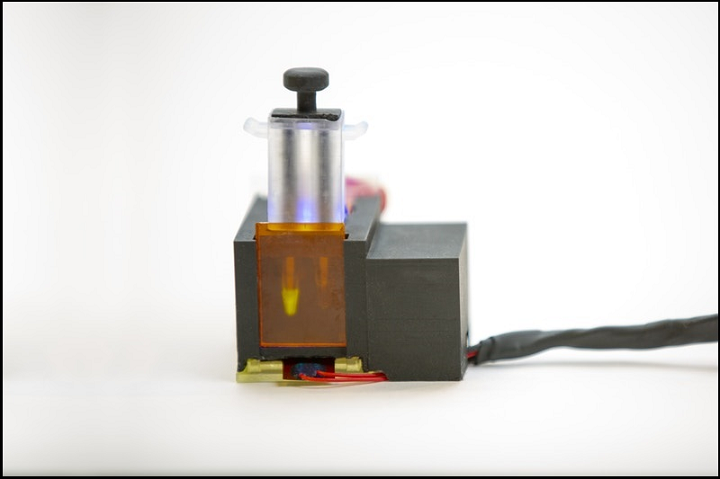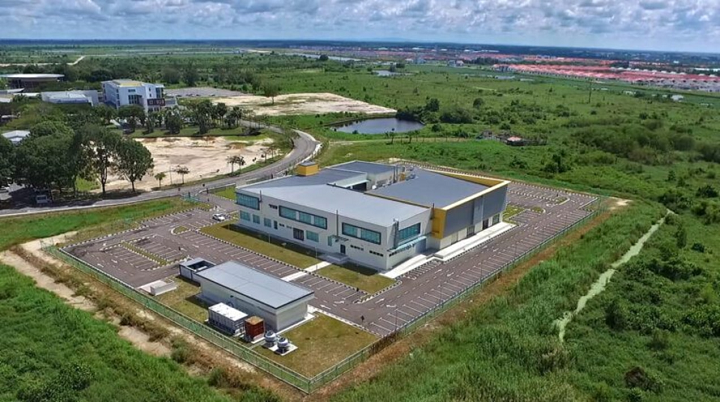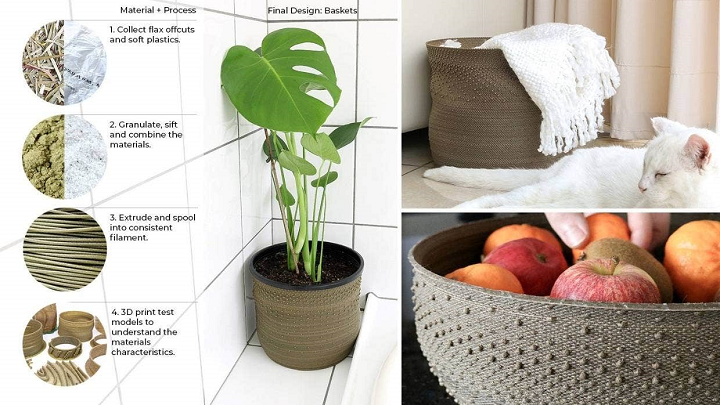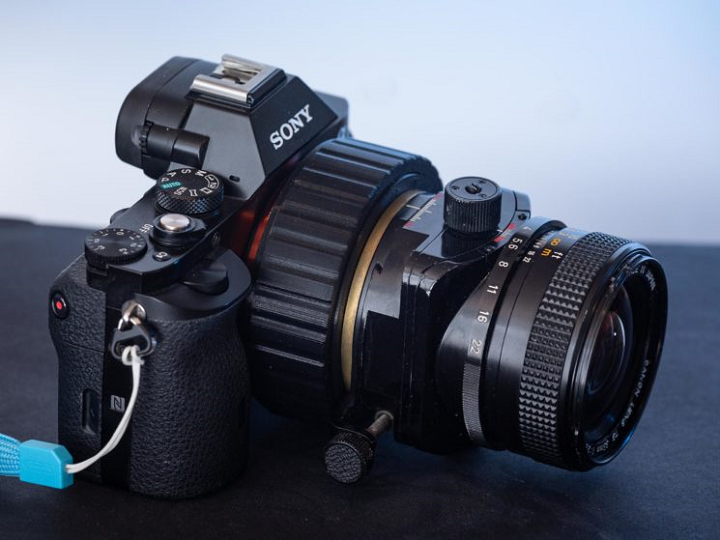In today’s 3D Printing News Briefs, some new 3D printed industry technology is being tested at Curtin Malaysia, and three partners are working to make vehicles more lightweight. Researchers have developed a 3D printable COVID test, and a US pilot will soon be launched for 3D printed meatless burgers. Students are 3D printing beautiful housewares out of recycled plastics, and 3D printed variable extension tubes make it possible to shoot macro photos.
New 3D Printed Tech Tested at Curtin Malaysia
A team of researchers from Curtin University Malaysia have developed a new 3D printed structured packing technology that makes for cleaner, more efficient gas separation and chemical processing in industries like food, pharmaceuticals, and chemicals manufacturing. The Food Packaging Technology and Equipment Market Size was estimated to be $41.36 Billion in 2019, and quality packaging ensures that food is delivered to customers in a suitable way, keeping it safe from infection, damage, pest attacks, and other issues, while also enabling a longer shelf life.
This new technology for the SpiroPak project is now being tested at an operational scale at Curtin’s purpose-built R&D Sarawak Biovalley Pilot Plant, thanks to support from the Federal Government’s Accelerating Commercialisation program, which offers entrepreneurs, researchers, and businesses access to funding and expert advice to bring new processes, products, and services to market. The SpiroPak features a unique helicoidal flow path, which allows for a smoother flow and more efficient gas and liquid separation than most other structured packaging processes and could ultimately save chemical manufacturing and processing industries millions of dollars a year.
LIFT, US Army, & ARRIS Lightweighting Combat Vehicles
California manufacturing company ARRIS Composites is collaborating with the US Army’s Michigan-based Combat Capabilities Development Command Ground Vehicle Systems Center (DEVCOM GVSC) on a project to reduce the weight of combat vehicles. The project is being contracted through manufacturing innovation institute LIFT, a public-private partnership between the DoD, industry leaders, and academia. Using topology optimization, part consolidation, an aligned continued carbon fiber composite structure, and ARRIS’s unique, scalable Additive Molding manufacturing platform, the partners will focus first on lightweighting the vehicle’s seats by replacing an assembly of metal components with one continuous fiber-reinforced composite (CFRC) structure.
“The real significance of a weight savings approach for vehicle design depends on its broader applicability. High-end, high-cost vehicles have lightweighting approaches that don’t translate to mass production and cost-sensitive industries,” said Nigel Francis, CEO and Executive Director at LIFT. ” ARRIS’ unique ability to combine lightweight materials, lightweight structural designs, and cost-effective manufacturing is an important set of capabilities to drive LIFT strategic objectives. Our collaboration with ARRIS and the Army is an important step in lightweighting vehicle structures for the military and the competitiveness of the U.S. automotive industry as a whole.”
3D Printed COVID-19 Diagnostic Tool

The unit can be created using 3D printing and publicly available designs. Credit: Wyss Institute at Harvard University
It doesn’t seem that COVID-19 is going away anytime soon, and rapid tests remain as important as ever, but these days it can be tough to get your hands on one at all, much less a highly accurate one. That’s why a research team from the Wyss Institute for Biologically Inspired Engineering at Harvard University decided to use 3D printing to create their own diagnostic tool: ‘minimally instrumented SHERLOCK’ (miSHERLOCK), which uses the scientific CRISPR process to snip SARS-CoV-2 RNA at a very specific location. The point-of-care test can be assembled with 3D printed parts and other common components for just $30, with all files and circuitry designs available online, and the cost of individual tests goes down to $10 when the hardware is reused. The user tests a sample of their saliva, which they’ve taken themselves, and the CRISPR process creates a fluorescent signal if the saliva detects the virus in any of its existing variants. Results are displayed on the accompanying smartphone app within the hour.
“It could be used to guide patient care as well as infection control or epidemiologically purposes,” Helena de Puig, a postdoctoral researcher in James J. Collins’ lab at the Wyss Institute, said about the miSHERLOCk.
“While there are other home-based test kits, many are antigen-based tests, which are generally less sensitive than nucleic acid tests, and most of the tests capable of identifying SARS-CoV-2 genes are self-collection kits that are mailed back to a central testing facility.
“There are no other point-of-care COVID tests capable of differentiating between specific variants. Our device provides direct confirmation of specific strains at the point of care.”
miSherlock – Detecting COVID-19 Variants from Saliva from Wyss Institute on Vimeo.
SavorEat to Launch Meatless Burgers in the US
Israeli startup SavorEat, which uses a patent-pending smart robot chef to 3D print plant-based meat alternatives, has signed a deal to launch a pilot program in the US for its meatless burgers. The deal—part of the startup’s goal to be commercial by 2023—is with the US subsidiary of French food services and facilities company Sodexo, which will examine SavorEat’s plant-based burger and smart robot system within some of the country’s higher education institutions, and eventually distribute its products in the US as well. This partnership will allow SavorEat, which went public on the Tel Aviv Stock Exchange last year, to target a younger audience that may be more open to new technologies, like 3D printed meat-free burgers, as well as a cleaner lifestyle.
“SavorEat is constantly working on growing with big players and companies in the food service arena with a special focus on the US market, it is ongoing and intensive work that takes shape. We are very happy that Sodexo sees the potential in our innovative technology,” said SavorEat CEO and Co-Founder Racheli Vizman.
“We believe it is right and necessary to expand to additional products such as plant-based turkey, pork, seafood products. We are already working on some of them.”
3D Printed Homewares From Recycled Plastic
For their industrial design masters project, Victoria University of Wellington students Matthew O’Hagan and Courtney Naismith wanted to solve the issue of local plastic recycling, and formed a research and design studio, The Utilize Project, to take difficult-to-recycle plastic waste and use 3D printing to turn them into functional, beautiful homewares, such as baskets, chandeliers, chairs, and more. To get the idea up and running, O’Hagan partnered with the fishing industry and Naismith worked with tourism, aviation, and universities to learn how to turn the various types of plastic they collected into 3D printing filament. It was a lot of trial and error, as each waste material melts and reacts to the printer differently, and they didn’t know how the objects would turn out at first; no one wants an ugly chandelier after all, even if it is a more sustainable product. But, as the pair were runners-up for the James Dyson award, it seems like they figured it out, and are well on the way to their ultimate goal: creating a roadmap for upcycling common New Zealand waste materials into the mainstream.
“We were inspired by plastic waste,” O’Hagan said. “We had some experience with 3D printing, and we thought it’d be cool to bring a relatively new manufacturing method to a very old problem.
“The pandemic has really highlighted the value of local production.
“It would be great if people could have interiors that mirror their values about how waste should be re-used, rather than discarded.”
3D Printed Variable Extension Tubes for Macro Photography
Finally, while macro, or extreme close-up, photography is a well-loved subject, those macro lenses are pricey. Photographer Nick Sherlock uses 3D printing to create macro accessories and extension tubes, and his latest 3D printed tubes have variable ranges, so photographers can use Canon EF mount lenses to adjust their length on Sony E mount bodies; better yet, they’re available to download from Thingiverse, so you can print your own! The first version is a 0-35 mm variable extension tube, which is meant for wide-angle lenses and simplifies things when you want to switch between normal wide shots and close-up macro shots of details without changing adapters or lenses. The 50-150 mm variable extension tube is specifically for macro shooting, as the adapter causes you to lose infinity focus but does offer magnification ratios from 1:1 to 3:1.
“Since there is a 26mm difference in mount depth between Canon lenses and Sony E/FE mirrorless cameras, I designed the tube to collapse down to 26mm at the short end, which allows infinity focus to be retained. At the long end it expands to 60mm total length, which provides 34mm of effective extension, so a 35mm lens can reach 1x magnification,” Sherlock said about the 0-35 mm extension tube.
“It also means that I can produce tiny extensions like 7mm that would be impossible when using Canon lenses on a Canon body. These tiny extensions enable macro even on ultrawide lenses like my Samyang 14mm (although the lens ends up just millimetres away from the subject!).”
Sherlock suggests printing the main part of the tubes using PETG, and switching to TPU for the EF locking mechanism spring.
Subscribe to Our Email Newsletter
Stay up-to-date on all the latest news from the 3D printing industry and receive information and offers from third party vendors.
You May Also Like
3D Printing Unpeeled: New Arkema Material for HP, Saddle and Macro MEMS
A new Arkema material for MJF is said to reduce costs per part by up to 25% and have an 85% reusability ratio. HP 3D HR PA 12 S has been...
3D Printing News Briefs, January 20, 2024: FDM, LPBF, Underwater 3D Printer, Racing, & More
We’re starting off with a process certification in today’s 3D Printing News Briefs, and then moving on to research about solute trapping, laser powder bed fusion, and then moving on...
3D Printing Webinar and Event Roundup: December 3, 2023
We’ve got plenty of events and webinars coming up for you this week! Quickparts is having a Manufacturing Roadshow, America Makes is holding a Member Town Hall, Stratafest makes two...
Formnext 2023 Day Three: Slam Dunk
I’m high—high on trade show. I’ve met numerous new faces and reconnected with old friends, creating an absolutely wonderful atmosphere. The excitement is palpable over several emerging developments. The high...




































